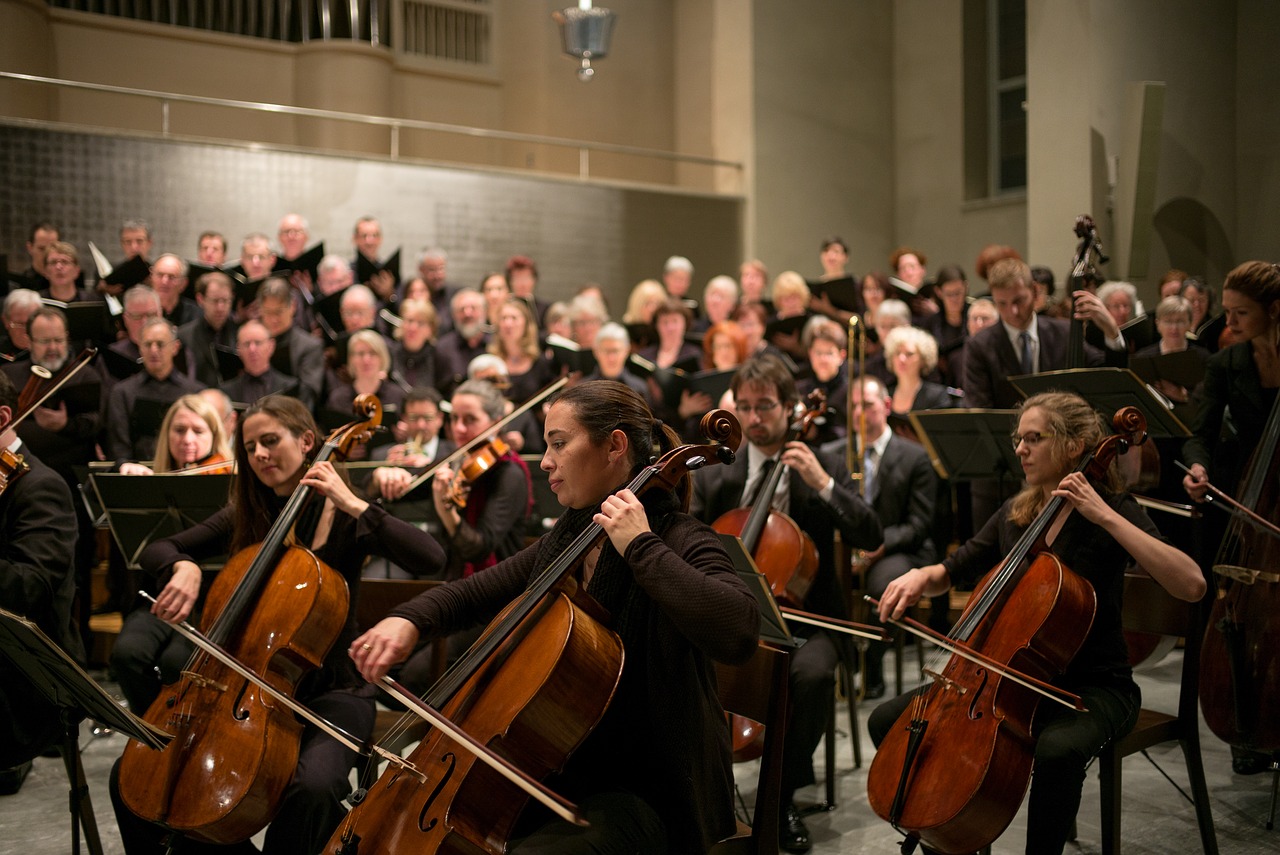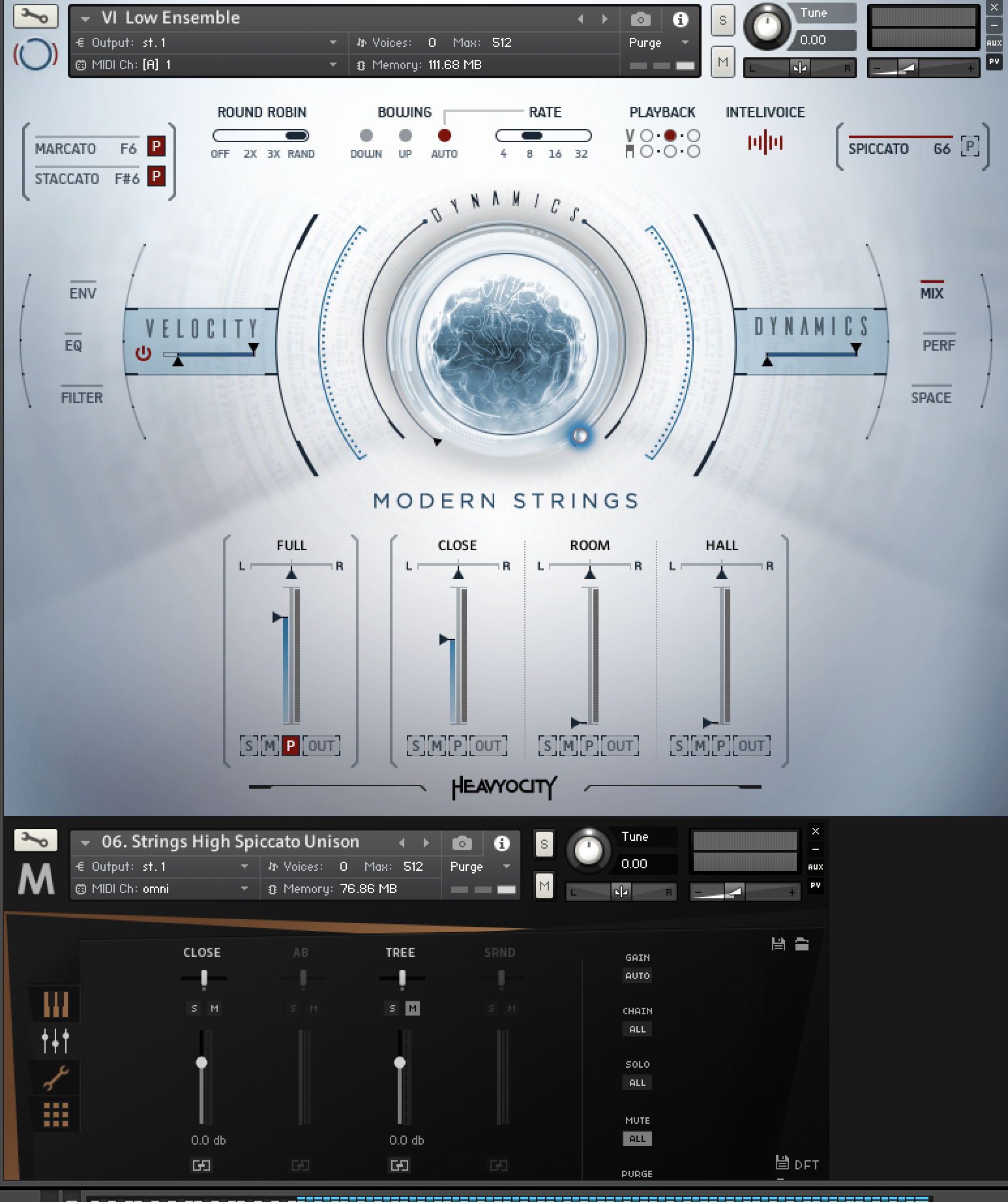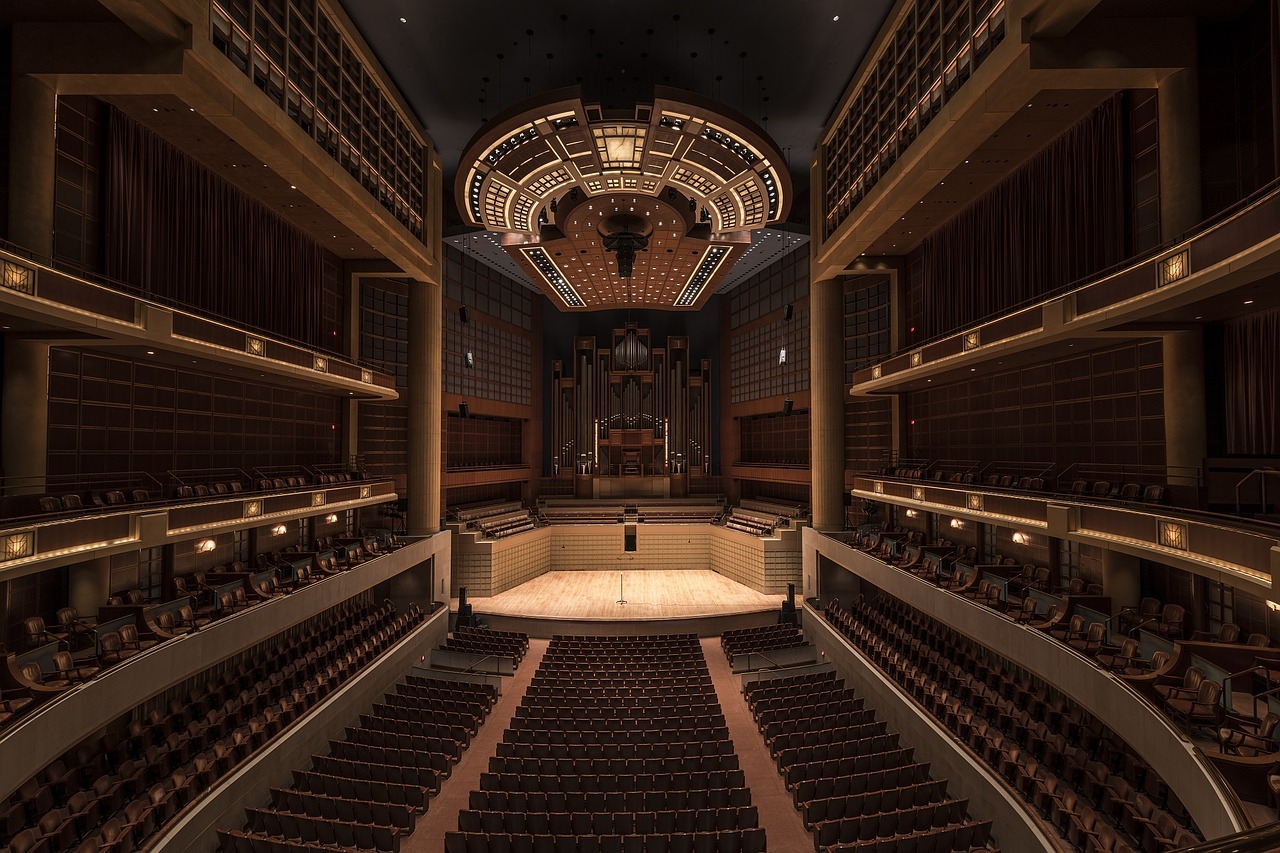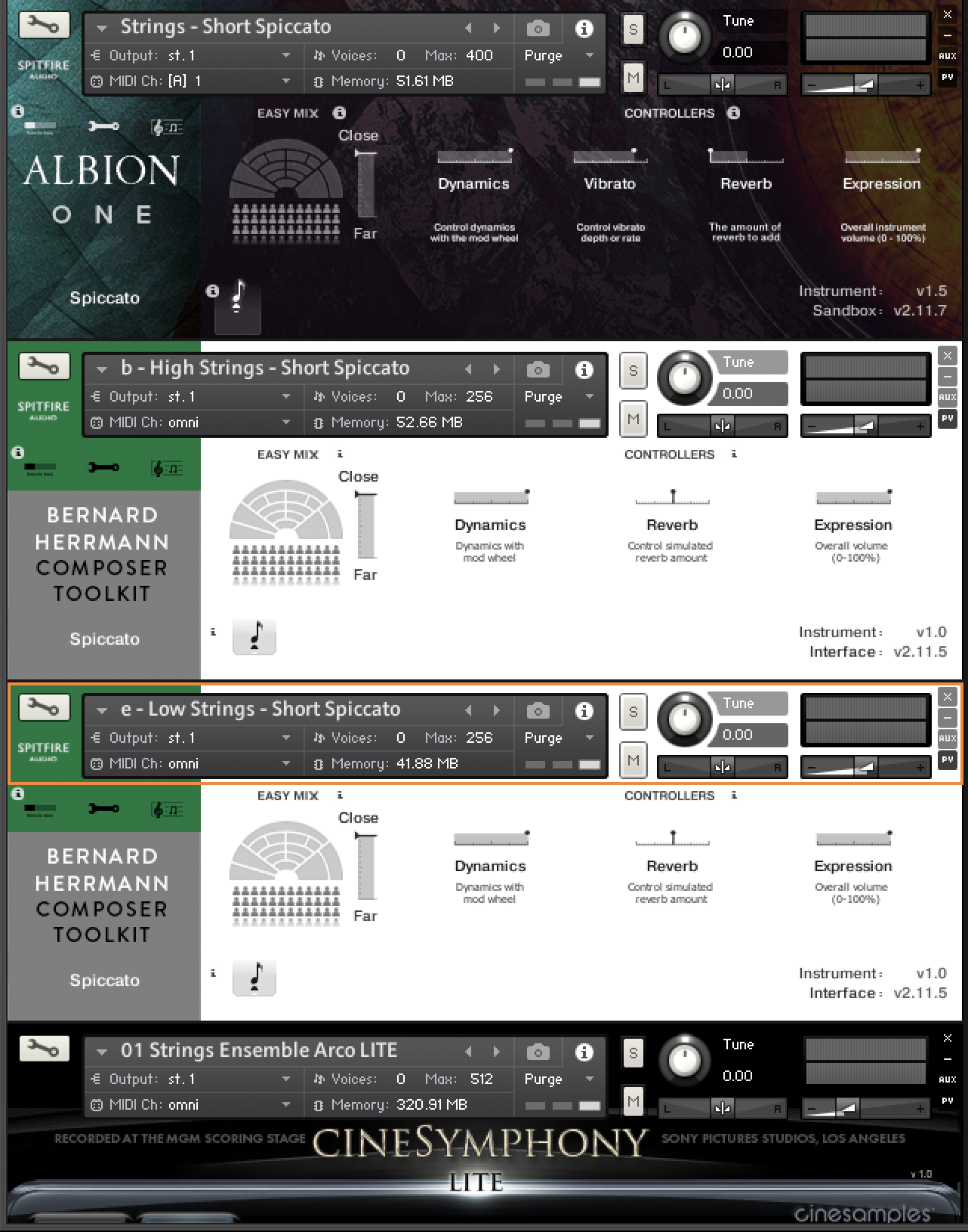5 Ways to Make Your Programmed Strings Sound More Convincing

The sound of sampled strings may have reached new heights, but you can only make them feel powerful and convincing if you know how to program them well.
Don’t you love how strings can add a refined sheen to songs, and make a mix just sound more “expensive”?
Hiring a real string section for your recording session can be expensive, but luckily, brands like Native Instruments, UVI, EastWest, and Spitfire have developed some pretty incredible sample libraries that anyone can use to add strings to their music.
Countless virtual string libraries can now be found on the (equally virtual) shelves that sound truly amazing. Some of the most widely used include Spitfire’s Chamber Strings, ProjectSAM Symphobia 1, Cinematic Studio Strings, LA Scoring Strings, Berlin Strings and Heavyocity’s NOVO Strings, among others.
While they are an investment, each of these libraries is relatively cheap compared to the cost of hiring a real string ensemble. The drawback is that it can be challenging to play or program these libraries to create realistic string arrangements, so today we are going to offer some tips on how to create much more convincing cinematic string parts.
For most of these entries, I’ll include audio examples, so you can hear these techniques in action for yourself. I used Spitfire Audio’s Albion ONE for all of them.
1. Use String Samples That Fit Your Style
Okay, this one may sound obvious at first, but a little extra time spent auditioning and selecting your libraries can reap tremendous rewards. Though many of today’s DAWs come with string and other instrument samples that can sound good, you may want to consider upgrading to higher-quality or more unique libraries to make your string arrangements really stand out.
Native Instruments’ Kontakt platform seems to be a common choice among most modern film composers, and there are many incredible third-party string libraries available for its engine. Some of the most surefire libraries to start looking at are Chamber Strings or Albion ONE from Spitfire, or CineSamples’ CineStrings, but there are countless others I would encourage you to check out. Some fantastic free string libraries to check out include Spitfire’s LABS Strings, Embertone Intimate Strings, Performance Samples Legacy Christmas 2016 Strings, and the pocketBlakus Cello.
One of the most important things to consider when picking a library is the aesthetic of the people who made the library and if it matches the tones you are going for.
A well-recorded string library isn’t going to do you any good if it’s just not to your tastes. For instance, if you want a silky John Williams-style sound, you might consider looking into the sizes of string ensembles he used and find a library with a similar number of players, recorded in similar spaces.
This means that selecting the right string libraries is a highly personal choice, and one that you shouldn’t simply farm out to the advice of others.
The above-mentioned libraries are some of my favorites, and are recorded with some of the best players in the world at iconic studios including Air Studios in London and the Sony Scoring Stage in LA.
The string sounds in these should be very competitive with what you hear on major new releases and classic albums. (Many of which were also recorded in these same studios). Though I think almost any producer or composer will be well-served by any of these, I’d encourage you to listen to them for yourself to discover which ones are most appealing to you.
Remember: There is no “Best String Library”. It is important to find the best one for your tastes, that sounds great to your ears and is relatively easy and intuitive to program.
2. Ride Your Velocities
One area that can often differentiate beginning string programmers from the pros is how they use velocity in their string sketches.
Many novices continuously play their string parts with the most forceful dynamic the string library has to offer leading to unrealistic results as most string players don’t play the loudest they can all the time. This would be fatiguing on the players (not to mention the ears), and the reality is that even on epic action music cues, the string players aren’t bashing away on their string instruments.
Most professional libraries tend to be optimized for playability and employ various scripting methods to allow you control of key parameters that a string player would be conscious of. For instance, all of the libraries mentioned above have an option to utilize the mod wheel to control dynamics. Many string libraries allow you to fade between different dynamic samples using the mod wheel on your MIDI controller for sustained notes.
Straight from Spitfire Audio’s Albion ONE: “You can use the Mod wheel, or a slider set to CC1, to control the ‘dynamic’ of the sound. This smoothly crossfades between very soft (or ‘pp’) recordings, through to very loud (or ‘ff’).”
It’s important to ride the mod wheel to add some dynamic realism to your performance. As you can hear below, the differences can be significant.
Additionally, most string libraries have the option of using CC11 to control “expression”. (Think of it as a volume control, whereas dynamics actually switches between quiet and loud samples). You can use expression in the same way that a mixer will ride a volume slider on a lead vocal track on a pop mix to bring attention to certain lines. Just make sure when you use the mod wheel that you reserve the loudest full setting of “127” for the rare, biggest moments in your productions, and try to keep the median setting lower so that you can have the option to push your strings over the top if you need an extra push later.
With samplers such as Logic Pro’s EXS24 and Ableton Sampler, it is pretty easy to set up the mod wheel to crossfade between different dynamics levels that are included in their stock string sounds.
For Logic’s EXS24 String Ensemble for example, the different velocity samples are normally triggered based on how hard you press each key. Instead of taking this approach, you can map them to be controlled by the modwheel to add an extra level of playability to the sounds.
Here is an example of a sustained string passage with a good velocity ride followed by a bad velocity ride:
Here is an example of a staccato string passage with a varied use of dynamics and one followed by a quickly mocked up “demo” velocity where all the velocities are the same:
3. Use the Right Reverb
With cinematic strings, it has become popular to use multiple string libraries and stack them together so you have a big lush string sound, but there is a slight problem that can stem from this.
Aside from the players in each library being different, they are generally recorded in different studios around the world (and at differing distances) so the actual room reverb that was captured when sampling those string players will differ across libraries.
Some arrangers combat this issue of differing room reverbs by using only the close mics that their libraries offer, and then adding in a uniform reverb plugin afterwards to make all the libraries feel like they were performed in the same space.
The issue with this is that close mics on strings can sound a bit harsh and bright for some ears. Personally, I don’t mind the blending of different studios with different string libraries, but I recommend adding an additional reverb to all the libraries to add some feeling of consistency while maintaining the natural sound of each library and the studio it was recorded in.
In theory, the idea of having a reverb on top of a string library that also inherently has reverb may seem like a bad idea, but it seems to work for lots of Hollywood film composers. So try it out and if you don’t like the sound, you can always resort to using the close mic method.
Here is an example of stacked strings using only the close mics, then adding in a reverb:
Here is an example of stacked strings using the tree (ambient) mics, then adding in a reverb:
4. Stack Your Strings (Yes, Doubling in Octaves is Actually OK Sometimes)
I can hear my freshman year music theory teacher groaning as I write this, but don’t be afraid to use octaves to double your parts.
A multi-part string arrangement doesn’t have to be complex to sound good. In fact, in the context of a full mix that is driven by modern elements, a simpler, more melodic arrangement can work even better.
In these cases, you can get the impression of a full string section by adding very simple layers, getting you richness without adding too much harmonic clutter.
A lot of novice composers I’ve talked to or mentored don’t know where to start with programming strings, and get turned off from their writing practice by their fear of having to write a great violin melody, and then follow it up with an equally great cello part and that’s before they realize that they have no idea what to program for the violas.
All that can seem daunting, so I recommend starting off by playing simple lines that stay mostly within the range of an octave-and-a-half. Then, the goal is to simply support this melody, which in turn, supports the larger piece.
In this context, taking a simple line and then doubling it with a string part up or down the octave can really help make it stand out and feel rich and cinematic in a full mix. Not only is this technique OK to employ, but it’s popular enough that Albion ONE even comes with a couple of octave string patches so that whenever you play a note on the keyboard, you’re actually playing that note along with the note an octave above.
To begin to get more advanced, you can start writing string sections as 3- or 4-note chords following the arc of the song’s changes, with the bottom note generally supporting the top melodic voice, which you might write first.
In any event, to help keep your stacked strings sounding like string sections instead of a string patch on a keyboard, layers are crucial. And they don’t necessarily have to be ornate to be effective.
Here is an example of the same string passage from earlier with added octaves to beef up the parts:
5. Think Like a String Player
If you want your strings to sound convincing, it’s crucial to learn to think like a string player.
As cool as it might sound to program a constant jump from a low A2 to an A6 on a violin, it’s a very unrealistic jump to make on the instrument and it would be a nightmare for an actual violinist.
While taking violin, viola, cello, and upright bass lessons may be out of the question for most, you can gain a great amount of knowledge on how to write great string parts by just listening to a lot of classical music and film score pieces to learn much of this instinctually.
It can be especially helpful to go and see string players play live or hire one real string player to layer with your samples. You can ask said string player if your string part sounds realistic, and ask for advice on what you can do to make your string parts more playable on a real stringed instrument. It’s a lot less expensive than hiring a full string section—or getting passed up for a gig because your string parts don’t sound authentic.
I hope that one or more of these tips will give you something new to bring to your arrangements and get you on the path to programming cinematic strings that inspire.
Please note: When you buy products through links on this page, we may earn an affiliate commission.










